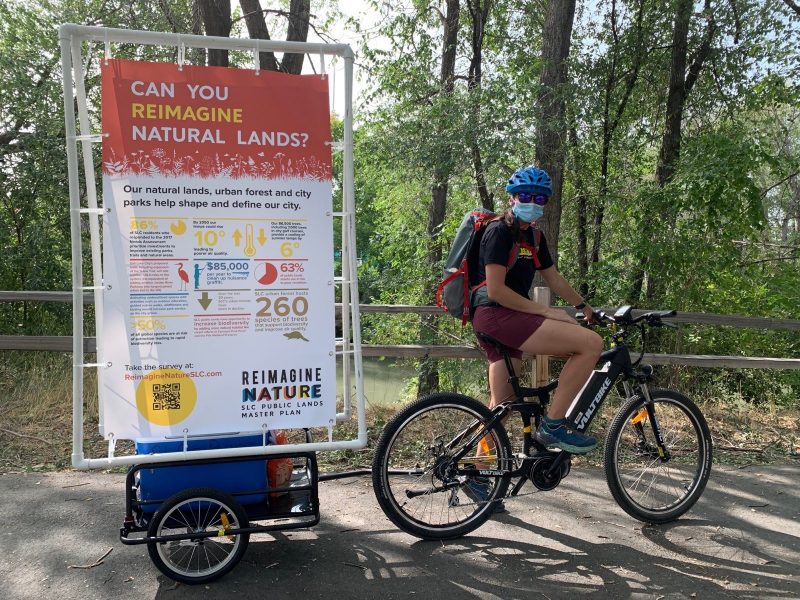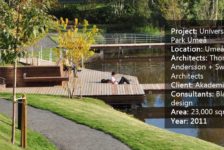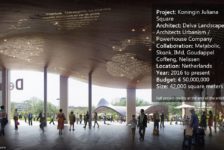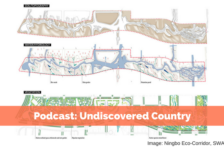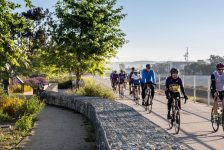The global impact of the novel coronavirus will not be known for years. COVID-19 has changed the way society lives and works. While there are many lessons learned, perhaps the most important one is that the future is nearly impossible to predict. There are, however, some trends that were influenced by COVID-19 and catalyzing events in 2020 that will continue to impact planning and design in 2021.
1. Importance of the Great Outdoors
Parks, trails and open space are providing a refuge for people to get out of the house, as restaurants, bars, gyms and other public gathering places are forced to limit operations or shutter their doors to slow the spread of the coronavirus. The role of parks as a community hub has not been more evident, now critical locations for socially-distanced yoga, outdoor gyms or a place to meet friends while maintaining separation – parks are a refuge from the chaos of working and schooling from home.
In 2021, we will see more cities engage in rethinking the role and function of parks and public lands, similar to the efforts that Salt Lake City begin this year. “Reimagine Nature” aims to establish an inspirational framework to guide how the city grows and prioritizes investments within the three public lands divisions of Parks, Trails & Natural Lands, and Urban Forestry.
2. Expectation to Return to Healthy Buildings
With a vaccine on the way, there is an expectation that more people will physically return to office buildings, schools, retail stores and restaurants in 2021. Gensler, an international architecture firm, put it this way, “The pandemic has sparked new conversations in the industry about breathing facades and HVAC systems now that we know the introduction of fresh air not only helps maintain healthier environments, but also dilutes the human-to-human passage of airborne elements.” Additionally, we will see more attention paid to designing spaces that blur the line between indoors and out. Open air rooms offer the best of indoor-outdoor working, living and recreating.

3. Equity in Planning, Design and Development
2020 brought to light many inequities that have existed for decades. Covid-19 accelerated both discussion and action in the real estate industry brought about by attention to social injustice and wellness in an environment of economic uncertainly. A commitment to improving social equity and addressing issues of environmental justice through design is imperative to the future of neighborhoods, communities and society.
With more awareness, comes a better understanding of and attention to the difference between equality and equity. In parks and recreation design, equality is often defined as all people receiving an equal amount of investment in the quantity and quality of parks and recreation programs, amenities and services. Equity is described as “ensuring everyone receives the appropriate investment for where they are” (NRPA 2020). As the graphic below from NRPA illustrates, each person is starting with different needs and some communities “need more investment because they have been historically underserved” (NRPA 2020).
4. Experiential Community Engagement
In 2021, planning and design professionals will continue to find creative solutions to gathering public insight and stakeholder input from a wide range of community members. This requires using and refining digital tools and facilitation techniques for remote collaboration with project teams, neighborhoods, communities, cities and counties.
Successful community engagement in 2021 provides project information online utilizing a variety of platforms and methods for interaction and collection of input. Whether sending visual preference surveys via Qualtrics and hosting virtual open houses via Zoom or utilizing tools such as Storymaps and facilitating geocache scavenger hunt, creativity and flexibility are key. The extensive use of electronic communications elevates the importance of good project branding and graphic design to unify and make the plan accessible. Project websites are now one of the most important tools for leveraging community input.
Critical to the success of all of these virtual tools is collaborating with social service providers and existing networks of community groups to reach typically underrepresented populations. Previously, the way to connect with these groups was to go to where they are. Now it is our responsibility to bring online engagement to them. Successful engagement with the public depends on clear communication, and special attention should be given to the wide range of physical abilities our audiences possess, as well as the various devices they may use to access online content.
5. Futuristic Technology Goes Mainstream
Virtual reality (VR) and augmented reality (AR) has been a specialized technology in planning and design. Thanks to COVID-19’s influence of forcing interactions to be virtual, this technology is going mainstream. VR replaces the real world with a simulated one, whereas AR takes the actual environment and interjects a proposed design or future condition. With AR software (typically an app used on a phone or tablet), people can reimagine the public realm, outdoor space, workspace or building.
Additionally, an increasingly important tool for landscape architect and planners, uncrewed aircraft systems (aka UAS or drones) will continue to be integral in providing real time metrics on how spaces are performing before and after improvements are constructed. Drones offer a new perspective using photos and video which allows planners to create base maps of existing conditions for much less than a full survey of a property typically costs. A standard survey may cost around $20,000 and take about four to six weeks to execute, whereas the UAS, associated licenses and software, and time and labor cost $2,500 and the mapping process takes 15 minutes. Landscape architect, Emily McCoy, summarized the impact saying, “making this process more affordable means its more accessible to a wide variety of projects thus bridging gaps in environmental and social inequity in real estate development.” Although a standard survey will eventually be necessary for detailed design and construction drawings, a UAS-created base map makes possible an informed plan with high-quality imagery and analysis.
Technology will continue to be leveraged to advance planning and design solutions.
Predicting what 2021 will bring is difficult but we can certainly apply lessons learned from adapting to the many changes experienced in 2020. Planners and designers have the opportunity to learn from this year and make an impact in 2021, keeping the industry moving forward with attention to solving social and environmental inequity and using new forms of technology to adapting to the way we work and live.
Published in Blog, Cover Story, Featured


